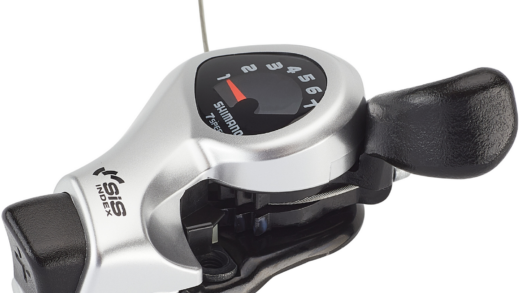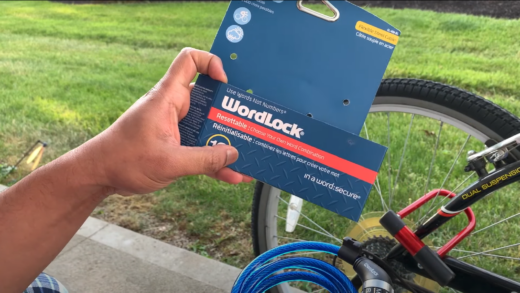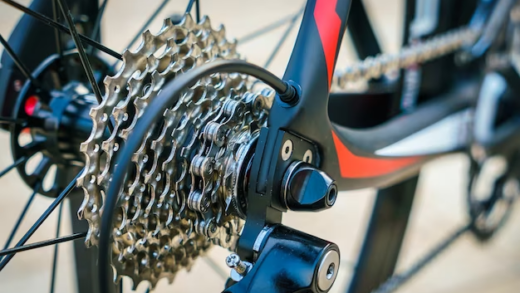Opting between internal gear hubs can be a perplexing task on its own. The confusion only amplifies when these hubs stem from the same manufacturer. Selecting the optimal gear hub predominantly hinges on your specific requirements. Whether it involves conquering uphill terrains, routine urban commuting, or attaining higher speeds – your needs dictate the choice.
The frequently posed question arises: “Alfine 8 vs. Alfine 11 – What sets them apart?” Alfine 11 boasts 11 distinct gear ratios, along with a lighter build and reduced noise, setting it apart from the Alfine 8 counterpart. Conversely, Alfine 8 presents 8 gear ratios, excels in symmetric gear spacing, proves its mettle uphill, and features a single-speed gear option.
Intrigued? These insights merely scratch the surface of their disparities. A more intricate exploration awaits within our article. So, why wait any longer? Let’s delve straight into the details.
A Swift Comparison: Alfine 8 vs. Alfine 11
Diving into a swift comparison between the Alfine 8 and Alfine 11 gear hubs is a great way to gain insights into their distinctions. The source of this comparison can be found at TurnCranks.
Without further ado, let’s unravel the essentials of these two gear hubs:
| Features | Alfine 8 | Alfine 11 |
|---|---|---|
| Gear Range | 307% | 409% |
| Gear Ratios | 0.527, 0.644, 0.748, 0.851, 1, 1.223, 1.419, and 1.615 | 0.527, 0.681, 0.77, 0.878, 0.995, 1.134, 1.292, 1.462, 1.667, 1.888, and 2.153 |
| Speed | Higher speed | Lower speed |
| Gear Skipping | 5, 6 | 5, 6, 7 |
| Single Speed | 5th gear | Absent |
| Uphill Riding | Good | Average |
| Weight | 1680g | 1590g |
| Noise | More | Less |
| Brake Type | Disc Brake (Center Lock) | Disc Brake (Center Lock) |
| Axle Length | 187 mm | 187 mm |
Alfine 8 vs Alfine 11 – Uncovering the Depths
Venturing further, let’s delve into the intricate nuances of these disparities and their implications on the decision-making process. Let’s explore:
Gear Range:
The distinction in gear range between the Alfine 11 and Alfine 8 becomes quite evident upon closer inspection. The Alfine 11 offers 11 distinctive drive ratios, while the Alfine 8 boasts 8 distinct gear ratios.
- Shimano Alfine 11 spans a remarkable 409% gear range across its 11 gears, encompassing everything from granny rings to middle rings. This wide range caters to various riding scenarios;
- Conversely, Shimano Alfine 8 encompasses a gear range of 307% across its 8 gears. However, the distribution of gears in the Alfine 8 is less uniform and more widely spaced, resulting in a lower overall gear range.
If attaining higher top speeds is a pivotal factor, the edge goes to Shimano Alfine 11. It unequivocally offers greater speed than Alfine 8 due to its additional gears.
- Winner: Alfine 11
Gear Ratio:
Gear ratios wield the power to determine the velocity derived from each gear of the hub. In essence, the gear ratio signifies the number of wheel rotations for every pedal revolution.
Naturally, a hub with a larger gear ratio translates to higher speed potential.
In the following section, we’ve undertaken a thorough examination of the gear ratios encompassing both Shimano Alfine 11 and Alfine 8 internal gear hubs.
| Gear | Shimano Alfine 11 | Shimano Alfine 8 |
|---|---|---|
| 1 | 0.527 | 0.527 |
| 2 | 0.681 | 0.644 |
| 3 | 0.770 | 0.748 |
| 4 | 0.878 | 0.851 |
| 5 | 0.995 | 1.000 |
| 6 | 1.134 | 1.223 |
| 7 | 1.292 | 1.419 |
| 8 | 1.462 | 1.615 |
| 9 | 1.667 | – |
| 10 | 1.888 | – |
| 11 | 2.153 | – |
There is no gear with a 1:1 ratio available in the Alfine 11, while it is indeed present in the Shimano Alfine 8.
Additionally, most of the gear ratios in the Alfine 11 are slightly higher when compared to the Alfine 8, with the exception of the 5th and 6th gears. However, it’s noteworthy that the 5th and 6th gears are often skipped during uphill rides when using the Alfine 8.
Furthermore, the Alfine 11 features the last 3 gears that are absent in the Alfine 8. This means that even without the extra gears, the majority of the gears in the Alfine 11 offer higher speeds.
Notably, the lowest gear in the Alfine 11 has a considerably larger step, making it particularly advantageous for ascending steep inclines compared to the Alfine 8.
Taking into consideration the speed achievable in each gear relative to the gear ratio, the Alfine 11 emerges as the superior choice.
- Winner: Alfine 11
Understanding Gear Step Symmetry for Smooth Shifting
Achieving smooth gear shifting is closely tied to the concept of gear step symmetry. This factor holds significant importance in ensuring seamless transitions between gears during rides.
When considering the Shimano Alfine 11 and Alfine 8, their distinct gear ranges result in varying steps between gears. This variance in gear ratios directly impacts the ease of transitioning between different gears.
For instance, in the Alfine 11, the first gear exhibits a gear ratio of 0.527, while the second gear boasts a ratio of 0.681. This shift from the first to the second gear represents a step-up of approximately 29.2%. To grasp the concept more comprehensively, let’s delve into the breakdown of their gear steps:
| Gear Ratio | Shimano Alfine 11 | Shimano Alfine 8 |
|---|---|---|
| 2:1 | 29.2% | 22.3% |
| 3:2 | 13.1% | 16.0% |
| 4:3 | 14.0% | 13.9% |
| 5:4 | 13.3% | 17.5% |
| 6:5 | 14.0% | 22.3% |
| 7:6 | 13.9% | 16.0% |
| 8:7 | 13.2% | 13.9% |
| 9:8 | 14.0% | – |
| 10:9 | 13.3% | – |
| 11:10 | 14.0% | – |
The Alfine 11 offers a greater number of gearing steps compared to the Alfine 8, resulting in more evenly distributed steps between gears. Conversely, the Alfine 8 displays uneven spacing with notable gaps between certain gear pairs, particularly between gears five and six.
This unevenness in gear spacing within the Alfine 8 creates an asymmetrical configuration. In contrast, the Alfine 11 exhibits a higher degree of symmetry in its gear distribution, enhancing the overall shifting experience and reducing the likelihood of gear skipping. Consequently, in terms of gear spacing symmetry and shifting efficiency, the Alfine 11 stands out as the superior choice when compared to the Alfine 8.
- WInner: Alfine 11
Smooth Gear Transitions
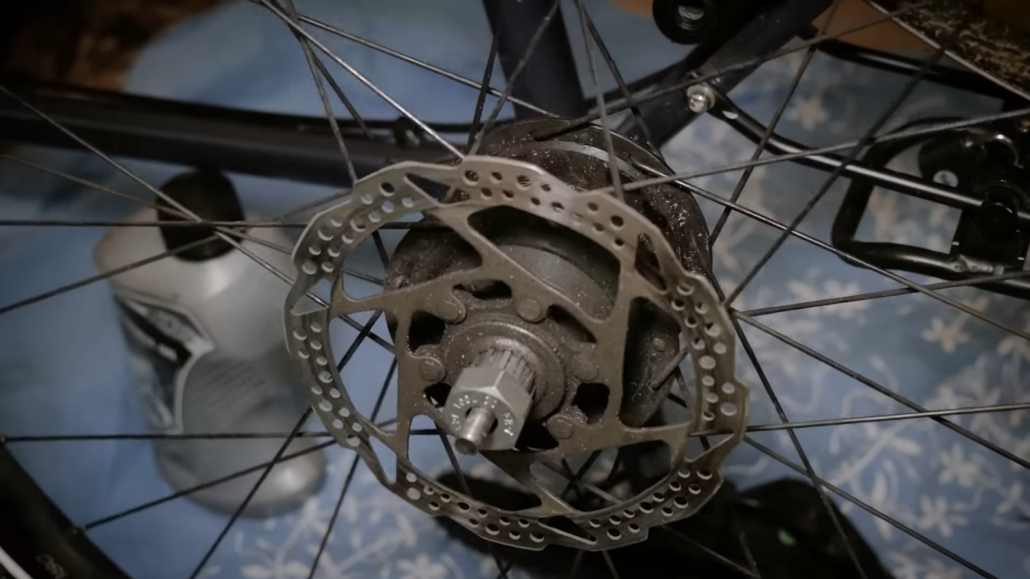
When delving into the realm of gear shifting, a common thread emerges across the Alfine lineup, stretching from Nexus 7 onwards: the challenge of seamless gear changes. This issue extends to both the Alfine 8 and Alfine 11 models.
- Within the Alfine 11 system, a tendency to skip gears manifests particularly when the rider is in a standing position. This phenomenon predominantly affects gears 5, 6, and 7;
- Similarly, the Alfine 8 also experiences analogous difficulties. Gears 5 and 6 are particularly prone to skipping. It’s important to note that these two gears exhibit the most pronounced irregularities within the Alfine 8 system. The skipping tends to be more prominent when navigating demanding situations such as uphill climbs, riding under heavy load, or rapidly accelerating.
Evidently, the shared issue revolves around gear skipping, though divergent patterns emerge in their manifestation. An interesting observation gleaned from rider reviews is that the Alfine 11 demonstrates a higher degree of agility in shifting.
To mitigate these shifting concerns, it’s crucial to ensure that the shifting cable remains free from contamination. This can be achieved by employing cassette joint units, which contribute to a cleaner and more unobstructed shifting experience. In the comparison of these shifting intricacies, the Alfine 11 emerges as the favored choice due to its swifter and more adept shifting performance.
- Preferred Winner: Alfine 11
Oil Lubrication and Upkeep: A Vital Aspect
Maintenance stands as a pivotal consideration for riders when deliberating gear hubs. This perspective arises from the desire to avoid unnecessary complications or added tasks.
Diverging from the conventional landscape of modern gear hubs, both the Alfine 8 and 11 stand out with their reliance on oil lubrication, bolstered by the inclusion of an oil port.
Where oil intertwines with the intricate mechanics of gears, the necessity for regular maintenance becomes indisputable.
- For the Alfine 8, maintenance involves immersing the central components in oil. The recommended approach involves submerging the internal hub within the proprietary maintenance kit offered by Shimano. Should one opt to install the Alfine 8, Shimano’s specialized parts kit can facilitate the process;
- In parallel, the Alfine 11’s servicing and maintenance entail draining the existing oil and subsequently replenishing the system with fresh lubricant. In both cases, the cost of the oil-based maintenance should not surpass $80, and with careful execution, it can even be notably less. This aspect culminates in a tie, as both the Alfine 8 and Alfine 11 systems share a reliance on oil-based maintenance to ensure optimal performance.
- Winner: Tie
Single Speed Advantage: Alfine 8 Takes the Lead
As previously noted, the Alfine 8 features a single-speed gear, specifically the 5th one. You might be wondering if single-speed bikes hold any merit. The answer is a resounding yes, as single-speed setups are favored by many riders.
A single-speed gear entails that the wheel completes one revolution for each pedal rotation. Having a bike that offers both single speed and additional gear ratios is a notable advantage, and the Alfine 8 delivers on this front.
Numerous riders are accustomed to the simplicity and efficiency of a single-speed setup, making it their preferred choice. For those who lean towards single speed, the Alfine 8 is the way to go, as the Alfine 11 lacks a single-speed gear option.
- Winner: Alfine 8
Uphill Riding: Alfine 8’s Climbing Prowess
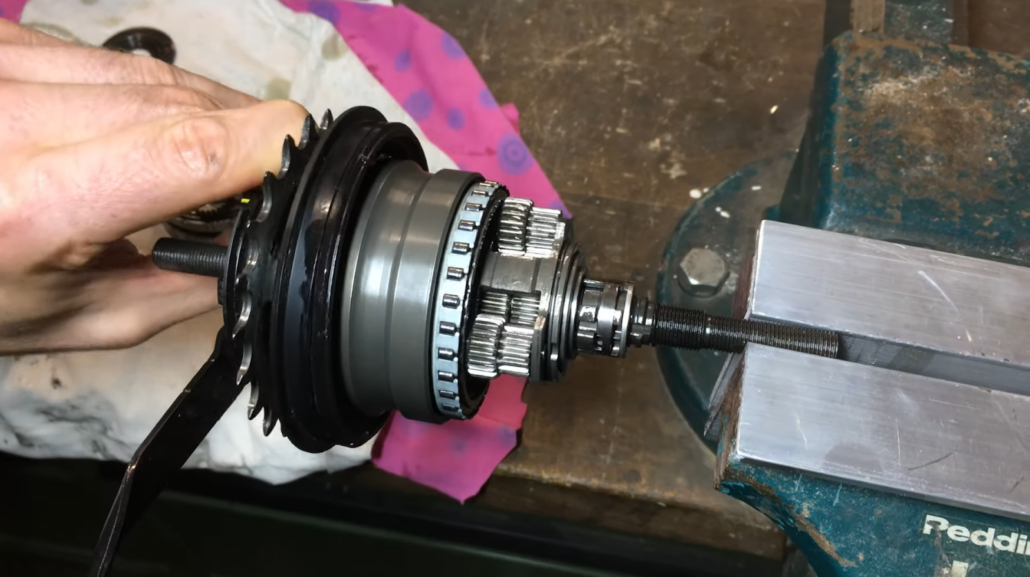
Uphill riding often plays a pivotal role in choosing between these two hubs. Lower gears are your allies when tackling uphill terrain, making the ascent more manageable, especially after a tiring day.
Both the Alfine 11 and Alfine 8 feature a first gear with a ratio of 0.527, providing similar results in this regard. However, the Alfine 8 offers a compelling advantage – it can be acquired at nearly half the price of the Alfine 11. This cost-saving factor significantly influences the decision-making process.
Additionally, the lower gears (1-4) in the Alfine 8 boast a lower gear ratio compared to the Alfine 11, which makes uphill riding more effortless. Taking both cost and gear ratios into consideration, the Alfine 8 emerges as the clear winner in uphill riding scenarios.
- Winner: Alfine 8
Noise Considerations: Alfine 11 Offers Quiet Riding
Noise, albeit a minor concern, can impact your commuting experience. The Alfine 11 holds a slight advantage in this aspect, as it tends to be quieter than the Alfine 8. While the Alfine 8 isn’t excessively noisy, the Alfine 11 exhibits less noise when transitioning between gears.
For riders who prioritize a quieter ride, the Shimano Alfine 11 stands as the optimal choice.
- Winner: Alfine 11
Weight Matters: Alfine 11’s Lightweight Edge
The weight of the Alfine 11 and Alfine 8 differs by approximately 100 grams. Notably, the Alfine 8 is slightly heavier, weighing in at around 1680g. Weight distribution can be a critical consideration, as the bike’s weight primarily centers around the tail.
Conversely, the Alfine 11 is lighter, weighing approximately 1590g. This reduced weight makes it easier to maneuver, especially when moving forward. In fact, the Alfine 11’s weight is even lighter than that of a speed hub.
Taking into account weight considerations, the Alfine 11 gains the upper hand and is the preferred choice for riders valuing a lighter setup.
- Winner: Alfine 11
Analyzing from Our Point of View
It’s a reality that both the Alfine 11 and Alfine 8 encounter their share of issues. To conduct a fair comparison, it’s crucial to assess which features align best with your preferences, irrespective of these challenges.
Should top speed be a pivotal consideration, the Alfine 11 emerges as a suitable choice. Its lightweight build and reduced noise levels further enhance its appeal. Notably, the gear spacing in the Alfine 11 is more consistent compared to its counterpart, the Alfine 8.
However, intriguingly, the Alfine 8 offers a comprehensive set of features, some of which are even more advantageous than those of the Alfine 11. Notably, it boasts a single-speed gear ratio and lower gear ratios optimized for uphill ascents, features absent in the Alfine 11. In a departure from the Alfine 11, the Alfine 8 does not exhibit the gear ratio asymmetry, a factor that can be bothersome to many. Additionally, certain shared issues like gear skipping and routine maintenance are part and parcel of both models.
With these factors in mind, our recommendation aligns with opting for the Alfine 8 if uphill climbing and single-speed setups resonate with your preferences. For others, the prospect of investing double the amount in the Alfine 11 might not hold sufficient justification. Although the Alfine 11 offers balanced gear spacing and higher gear options, it has been observed to encounter gear skipping despite these improvements. As such, the distinction between the two models is less pronounced than it might seem.
Conclusion
That concludes today’s discussion on the comparison between Alfine 8 and Alfine 11. We trust that our insights have provided valuable guidance in determining the most fitting gear option for your requirements. Remember, your choice should align with your individual needs.
We sincerely appreciate your engagement throughout. If you have any inquiries, please don’t hesitate to share them in the comment section below. Your feedback and questions are always welcome.
FAQ
Internal hub gears operate through a planetary system. This configuration comprises central sun gears and revolving planetary gears that encircle them. Sequentially, the planetary gears rotate before the sun gears. Unlike derailleur systems, internal hub gears are contained within a sealed unit.
Indeed, internal gear hubs tend to be weightier compared to derailleur systems. This added weight can slightly impact acceleration in internal hub gears.
